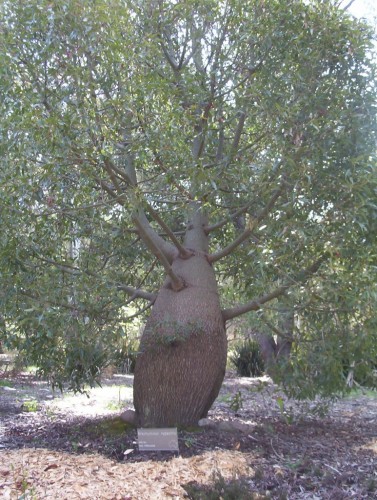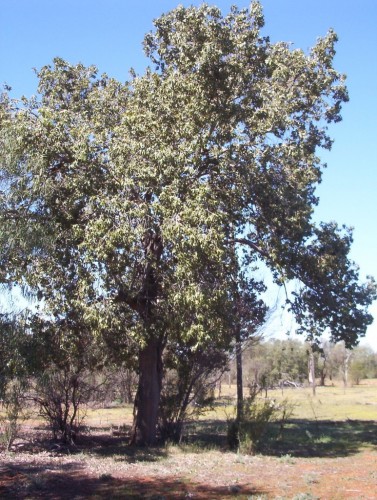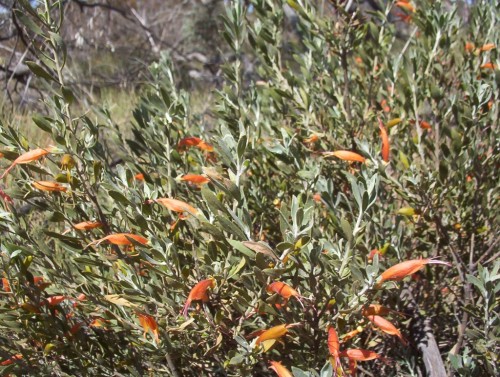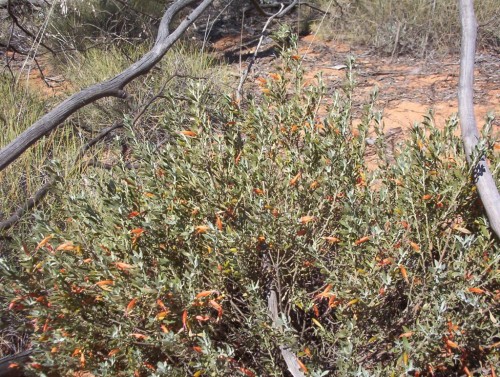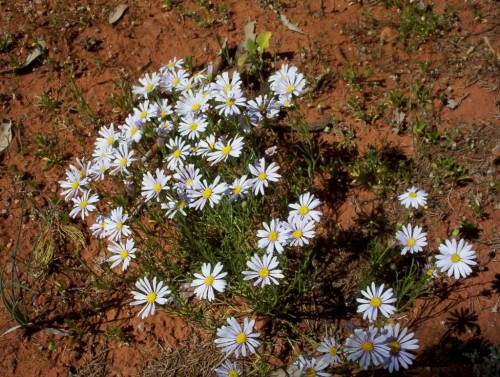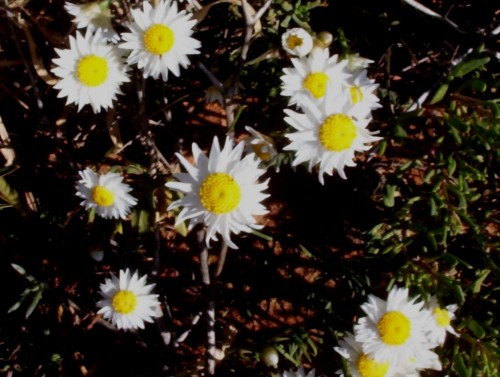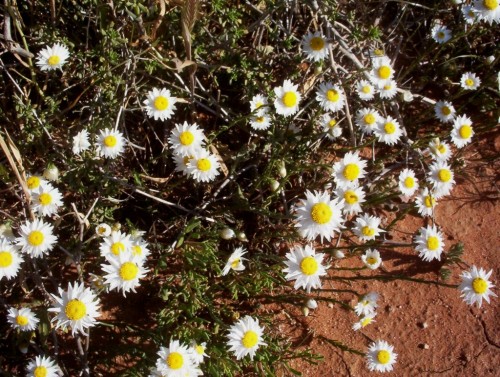Brachychiton rupestris (Bottle Tree)
The trunks of the trees are prominently bottle shaped with large specimens having a diameter up to 2m (6 feet). The tree is hardy in most areas once established and of course would appreciate some water during hot dry periods. Young trees are slow growing and make attractive and unusual pot plants for some years.
This tree is an important fodder tree for stock during dry periods. The Aborigines ate the young roots and seeds either raw or roasted.
.
Brachychiton populneus (Kurrajong)
These trees are semi deciduous, losing their leaves just before flowering. This particular species has bell shaped cream flowers, blotched with red on the inside. Young leaves are tinged with pink. They are very easy to grow and tolerate a wide range of climatic conditions and soils. Although very drought tolerant, they appreciate water during the summer. This species is frost hardy.
Because they are slow growing while young, they make excellent pot plants and are used for indoor decorations.
Further information can be found here.
Eremophila glabra orange form (Emu Bushes)
We were driving along the Konardin track near Hattah-Kulkyne National Park and came across this lovely orange flowered Eremophila glabra.
Eremophilas are such drought hardy plants that they are proving to be very popular with gardeners at the moment. Drought has taken its toll on many otherwise hardy plants. Generally speaking Eremophilas are arid land plants. Surprisingly most like quite heavy soils but also prefer good drainage. Trimming after flowering from the very beginning maintains the foliage near the trunk and branches. Many Eremophilas become very woody without this. Some species can be cut back very hard to bare wood and they will sprout new growth.
It seems to be a problem in wetter areas to grow these plants. Raised beds may be the answer and also open areas with good air movement.
Minuria leptophylla (Minnie Daisy)
When I took the photo of the Olearia pimelioides, Minuria leptophylla was growing nearby and I have seen masses of this plant also. This added weight to my demand to stop and see what they were. After that they seemed to be everywhere.
Minuria leptophylla is a perennial plant which dies back in the heat and dryness of summer, to reshoot after autumn rains. The plant is 5-20cm tall. The flowers are white mainly with pinks and purples being available at times and seem too large for such a small plant. It grows on most soil types.
From a farming point of view, stock graze this plant and it is valuable for this purpose. In the garden it would make a great border plant and if the water was available to give it good garden conditions, it would flower for most of the year.
Rhodanthe floribundum (Common White Sunray)
This daisy is one of the everlasting daisies and was growing like a carpet along the roadside from Ouyen through to Manangatang. I know it has had a name change from Helipterum but I am not sure whether it is Rhodanthe or not. I did not bring the daisy books with me. It is an annual and flowers prolifically.
This plant grows on all soil types and in quite low rainfall areas 250mm to 350mm. In good seasons plants can be up to half a metre across.
A friend often throws everlasting daisy seed around on a sand or small gravel mulch in late autumn, sprinkles the area well with water and then sits back to watch the ‘lawn’ grow and eventually sees the masses of flowers in the area. This is well worth doing. The sand or gravel acts as a mulch and retains moisture around the seed where it is washed into the nooks and crannies amongst the small stones.
The flowers wire well for floral art work if picked early enough to prevent the petals from flexing back too far when they open. Trial and error is needed here, to pick the flowers at the correct stage of bud size.
